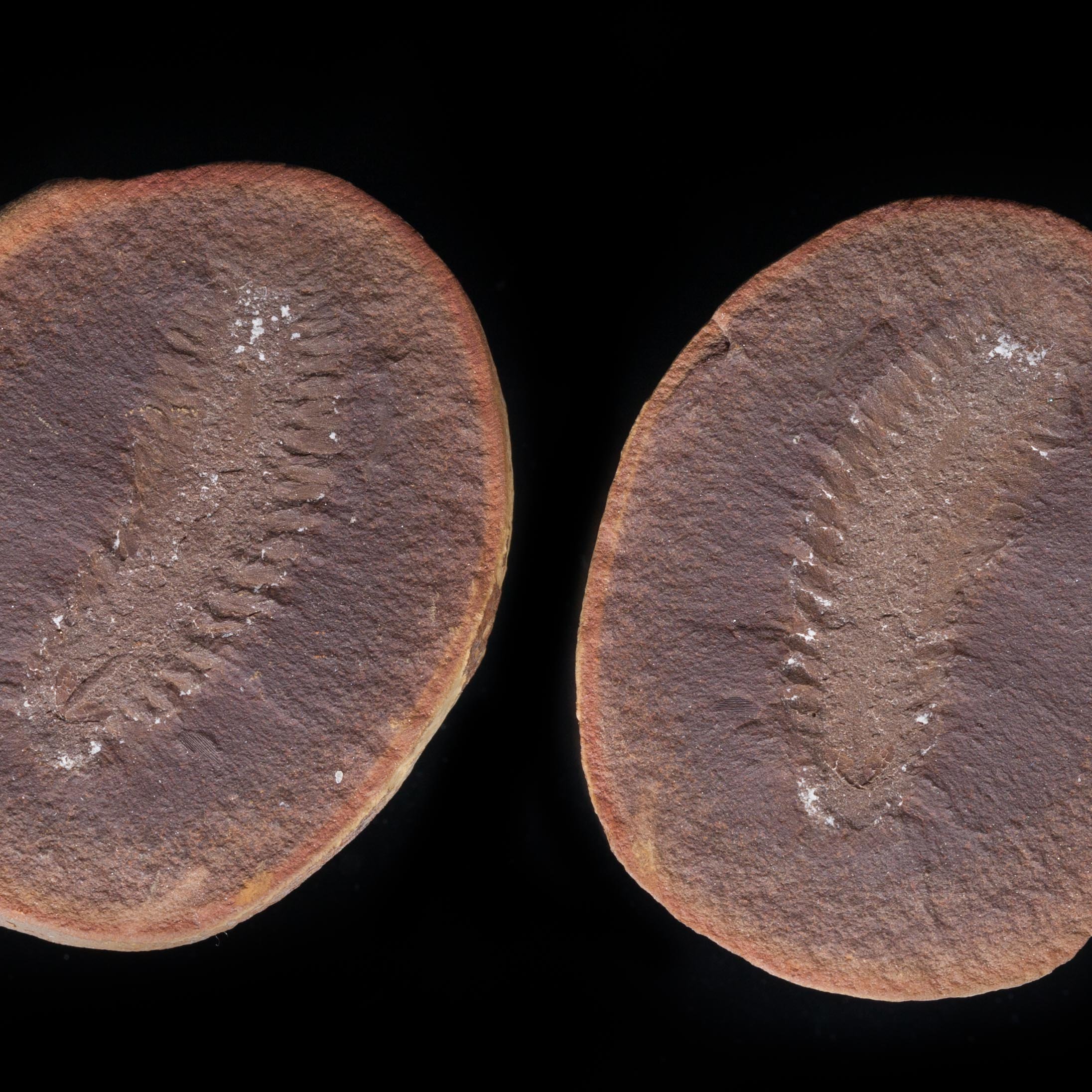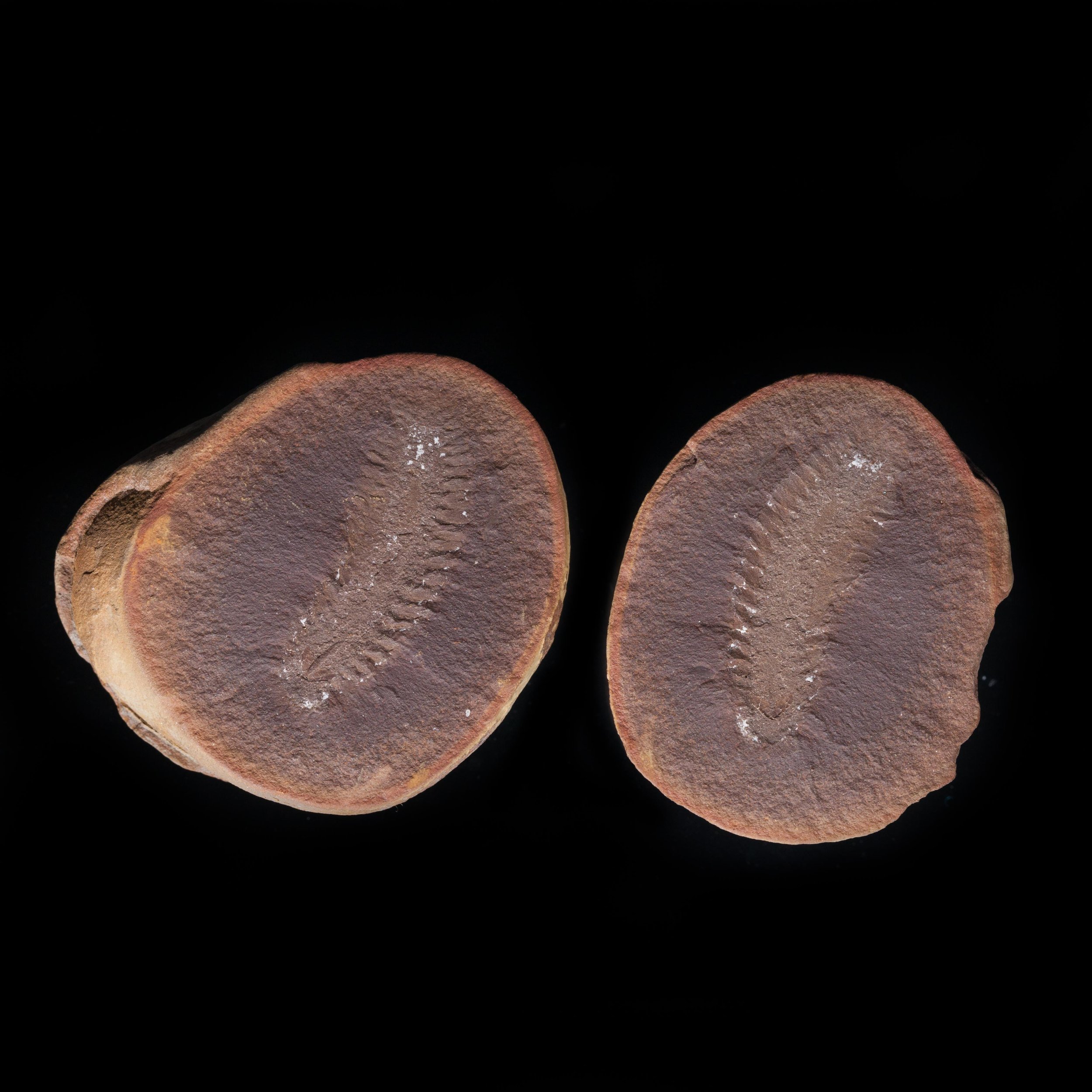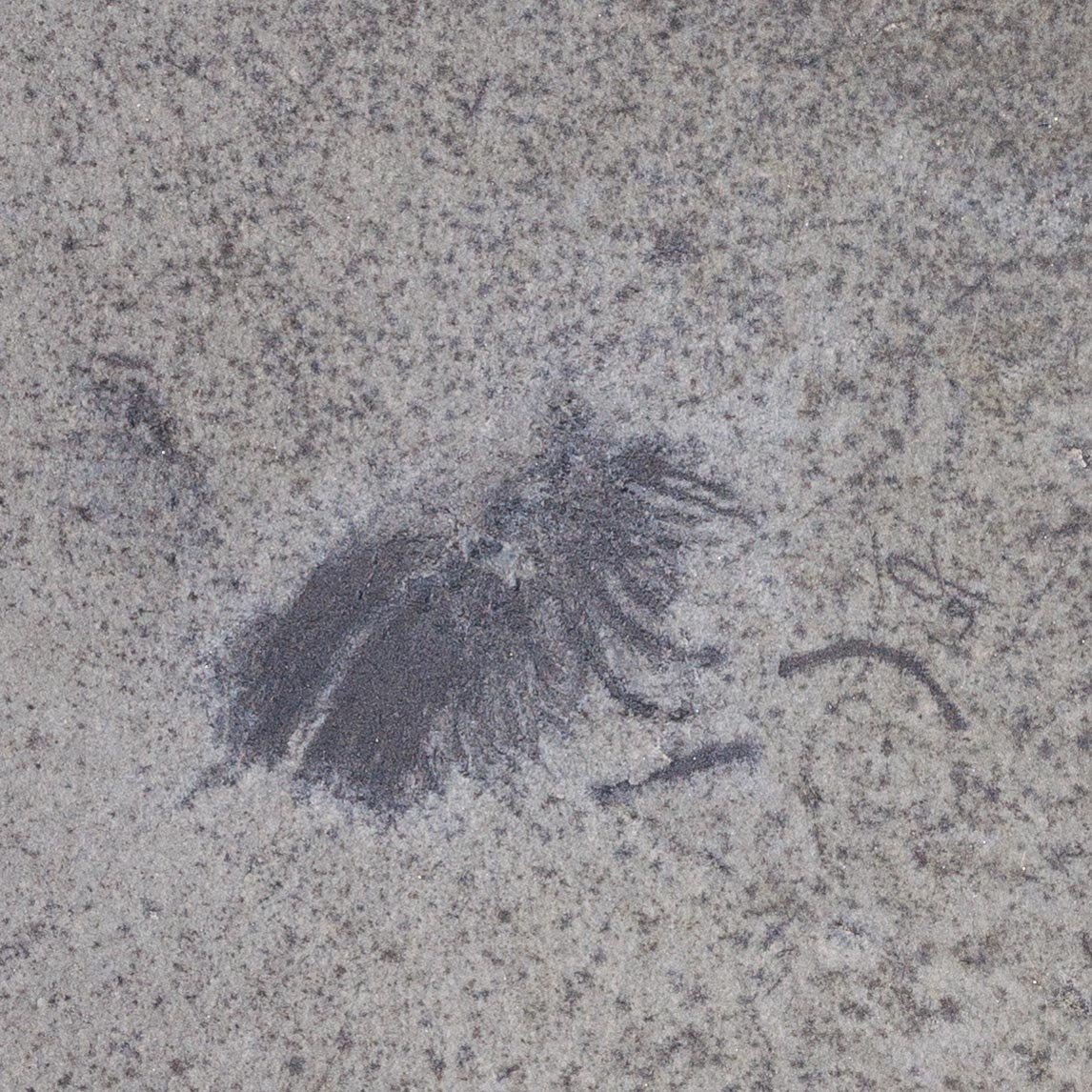Fossundecima konecniorum
Vendor: Fossil Soup
SKU Number: SQ2070217
Fossundecima konecniorum was a polychaete worm, also known as bristle worms, from the famous Middle Pennsylvanian Coal deposits of Illinois.
These deposits produced nodules of ironstone that were separated from the coal and form large spoil mounds from which many wonderful fossils have been collected.
This is a beautiful example, centered perfectly within the ironstone and comes with both sides of the nodule. The bristles, which are connected to protrusions along the body called parapodia, are called chaetae and are composed of chitin.
Full dimensions are listed below.
Vendor: Fossil Soup
SKU Number: SQ2070217
Fossundecima konecniorum was a polychaete worm, also known as bristle worms, from the famous Middle Pennsylvanian Coal deposits of Illinois.
These deposits produced nodules of ironstone that were separated from the coal and form large spoil mounds from which many wonderful fossils have been collected.
This is a beautiful example, centered perfectly within the ironstone and comes with both sides of the nodule. The bristles, which are connected to protrusions along the body called parapodia, are called chaetae and are composed of chitin.
Full dimensions are listed below.
Vendor: Fossil Soup
SKU Number: SQ2070217
Fossundecima konecniorum was a polychaete worm, also known as bristle worms, from the famous Middle Pennsylvanian Coal deposits of Illinois.
These deposits produced nodules of ironstone that were separated from the coal and form large spoil mounds from which many wonderful fossils have been collected.
This is a beautiful example, centered perfectly within the ironstone and comes with both sides of the nodule. The bristles, which are connected to protrusions along the body called parapodia, are called chaetae and are composed of chitin.
Full dimensions are listed below.
Additional Information
The Mazon Creek fossils are found in the Upper Carboniferous Francis Creek Shale, the type locality is the Mazon River (or Mazon Creek), a tributary of the Illinois River near Morris, Grundy County, Illinois.
The remains of plants and animals were rapidly buried by the sediment deposited in the deltaic system. Bacterial decomposition of the remains produced carbon dioxide that combined with dissolved iron from the groundwater. This process formed siderite in the sediments surrounding the remains, forming detailed casts of their structure. Lithification of the sediments formed protective nodules of ironstone around the now fossilized remains. This mode of preservation is known as authigenic mineralisation.






